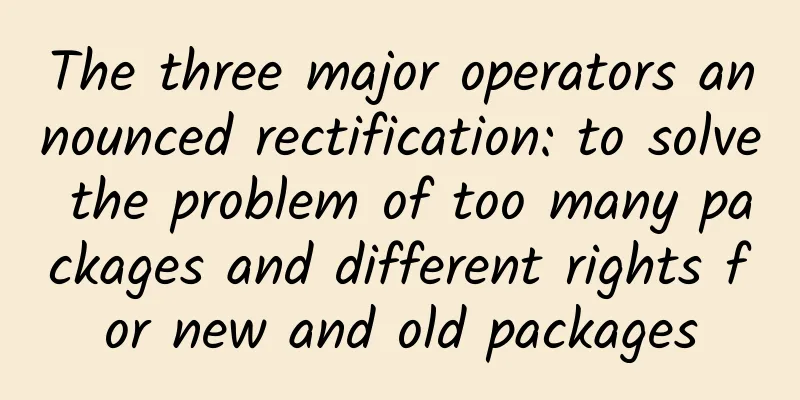Do you know how to debug Modbus protocol?

|
The Modbus protocol adopts master-slave communication. The two most commonly used ones are Modbus RTU and Modbus TCP/IP. The more commonly used Modbus communication debugging software are ModScan32 and ModSim32. ModScan32 is mainly used to simulate the master device. It can send instructions to the slave device (device terminals such as smart meters using the Modbus protocol). After the slave responds, the data of the corresponding register can be returned on the interface. ModSim32 is used to simulate slave devices. It can simulate intelligent terminals using the Modbus protocol. In the process of interacting with the configuration software, our board or software usually acts as a slave device. In order to understand the specific interaction process of the Modbus protocol, we will use ModScan32 software and serial port assistant to debug the Modbus protocol today. Achieving goals
Material acquisition The method for obtaining the software related to this article and the Modbus protocol manual is published in the WeChat discussion group. Test Prerequisites Create a pair of virtual serial ports for debugging. We choose COM4 and COM5 here. Using this pair of virtual serial ports, the data sent by COM4 can be forwarded to COM5, and vice versa, the data sent by COM5 can be forwarded to COM4. Data interaction can be achieved through these two COM ports. ModScan32 Software Tutorial ModScan32 is an application that runs under Windows as a Modbus protocol master in RTU or ASCII transmission mode. Connect one or more Modbus slave devices to a computer via a serial port, modem or network, and use ModScan to read and modify data points. Open the software Double-click ModScan32.exe to open the software. Software interface introduction There are two counts in the upper right corner of the window: Number of Polls: Indicates the number of data packets sent by ModScan32 software; Valid Slave Responses: Indicates the number of responses returned by the slave device. If both counts are increasing, data communication is normal. Connecting to the Serial Port First, you need to configure the serial communication parameters of the Modbus device, connection parameters, and select the serial port for serial communication. Here, select COM4 in the pair of virtual serial ports above. Click the protocol selection button and set the Modbus transmission mode in the pop-up dialog box. We select RTU for testing. Communication parameter settings The communication parameters include: starting address (Address), Device Id, register length (Length) and read function code. The MODBUS Point Type (Modbus data model) includes the following four types:
Select the specific Modbus data model according to the hardware manual. connect Click "Connect" in the "Connection Settings" menu, configure the communication parameters in the pop-up interface, and click "OK" to establish the connection. Debugging with the Serial Assistant Query The host ModScan32 software sends a command to read the current status of the slave coil register. The data received by the slave (serial port assistant simulates the slave) is: 01 01 00 00 00 64 3D E1 This data packet is an instruction to read the coil register, and its specific meaning is:
answer Normally, when the host sends a data packet, we need to send a data packet with a fixed format as a response within a certain period of time. Otherwise, it will prompt a timeout "MODBUS Message TIME-OUT" or the received response format is incorrect "Received Invalid Response to MODBUS Query" or a checksum error "Checksum Error in Response Message". The correct response packet is as follows: 01 01 0D 08 00 00 00 00 00 00 00 00 00 00 00 00 AD E5
The number of bytes returned N = the number of registers read/8. If the remainder is not 0, N = N + 1. In this example, the number of registers read is 0x64, which is 100. 100/8=12 with a remainder of 4, so N=12+1, which is 0x0D. Each bit of the returned data corresponds to the coil status, 1-ON, 0-OFF. The lowest bit of each byte of data represents the state of the coil at the lowest address. If it is less than 8 bits, the high bit of the byte is filled with 0. After the host ModScan32 software receives the response, the value of register address 0x0004 is modified to 0x01, and the Valid Slave Responses count is +1. The first byte of the data, 0x08, is represented in binary as 0b0000 1000. The fourth bit is 1, which is consistent with the content returned in our response. Similarly, if the slave returns the data packet: 01 01 0D FF 00 00 00 00 00 00 00 00 00 00 00 00 E6 53, it means that the coil states of registers 00001~00008 are all ON: The host sets the coil on/off status ask Modify the serial port data of address 0001 to 0x01: 01 05 00 00 FF 00 8C 3A Some MODBUS function codes
Function codes can be divided into two categories: bit operation and word operation. The smallest unit of bit operation is bit, and the smallest unit of word operation is WORD (two bytes). From the above table, we can see that the function code for the host to modify the value of a register is: 0x05, that is, write a single coil. The structure of the data packet for writing a single coil is:
Note: If a coil value is set to ON, the value is 0xFF00, and if a coil value is set to OFF, the value is 0x0000. answer The response is the same as the request: 01 05 00 00 FF 00 8C 3A
Summarize In fact, it is most convenient to debug by directly using ModSim32 software as the slave and ModScan32 software as the host, and the two communicate data. However, the purpose of this demonstration is to understand the working process of ModScan32 software. If you use ModSim32 software, you will not understand the specific working process. If we use the serial port assistant, the whole working process will be clearer, and it will also be convenient for us to write the Modbus slave software ourselves in the next step. This article is reprinted from the WeChat public account "Embedded from 0 to 1", which can be followed through the following QR code. To reprint this article, please contact the Embedded from 0 to 1 public account. |
<<: Strong partner ecosystem helps Denodo grow in Greater China
>>: Learn the history of HTTP in 6 minutes
Recommend
Zgovps: $15.9/year-AMD EPYC7B13/1GB/20GB/1TB@500Mbps/LAS4837
Share the Los Angeles AMD VPS series hosts provid...
No more restrictions! Detailed explanation of FRP intranet penetration, making remote access simple!
1. Introduction frp is a high-performance reverse...
Telenor launches 5G network in more than 60 locations in Bulgaria
Telecom operator Telenor has officially launched ...
Network-oriented, NPMD achieves 80% of functions with 20% of investment
An organization once worked with MIT to interview...
DeepMind Nature published: AI achieved major progress in mathematics for the first time
[[439094]] Mathematics is an ancient discipline t...
Zhongguancun Frontier Technology Innovation Competition and Entrepreneurship Week grandly opened
[51CTO.com Beijing report] In order to implement ...
iWebFusion: Dedicated servers from $49/month, 10Gbps bandwidth servers from $149/month, Los Angeles/North Carolina data centers
iWebFusion (also known as iWFHosting) is a well-e...
5G commercialization in its third year: a new prosperity
"As of the end of September, the total numbe...
Tencent Cloud Procurement Season: Standard cloud server annual payment starts from 95 yuan, lightweight cloud server 1C2G5M=288 yuan/3 years
Here is an update on Tencent Cloud's flash sa...
Network Slicing "Hot Pot Theory": Same Pot, Different Dreams
In the dog days of summer, when people are "...
What is edge computing in IoT?
The growing number of “connected” devices is gene...
Optimization practice of real-time 1V1 Q&A RUDP transmission with global 250 milliseconds delay
Recently, I have talked with many friends in the ...
How will the arrival of 5G affect smart cities and real estate?
The fifth generation of mobile connectivity is up...
Tencent Cloud 618 Procurement Season, 2C4G6M lightweight server starts at 128 yuan/year, 2C2G4M starts at 18 yuan for three months
We participated in the preheating and received co...
Technology “hidden” by life: WIFI
Nowadays, we use WIFI so many times every day tha...









